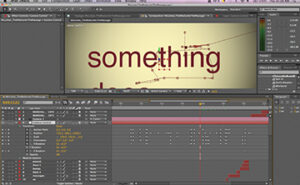
by Debra Kaufman
In the MAY-JUN 14 issue of CineMontage, writer Mel Lambert surveyed sound designers, sound editors and supervising sound editors about the Digital Audio Workstation add-ons that they use to get the job done. In this issue, we’ve asked picture editors what their plug-in choices are.
First surprise: Picture editors don’t rely on plug-ins as much as their sound brethren do. According to a number of Guild editors interviewed, audio editors are much more likely to use plug-ins than picture editors, using tools to sweeten and tweak audio with reverb, pitch correction and other characteristics.
Why are plug-ins less popular among picture editors? It all boils down to how the project is going to be finished. On the audio side, there’s no conform, whereas picture editors are all working on offline material. With the exception of short-form material (commercials and music videos), editors have to know how the project will be conformed. For example, a project conformed with Symphony can make use of anything done in the offline, whereas anything conformed on Smoke requires any visual effects done in the offline to be re-created.

But picture editors do use plug-ins — usually but not always to create visual effects, which can help tell the story and act as placeholders in offline. Dan Lebental, ACE (Thor: The Dark World, Cowboys & Aliens, Iron Man 2), who is currently cutting the thriller Term Life, agrees with that assessment.
“As feature editors, we’re telling the story, not doing the final,” he says. “Whatever we’re doing is a mock-up to suggest what the final people do, whether it’s in the digital intermediate or a visual effects or title house. Whatever I do in plug-ins, I’m using these things as a shorthand; they may end up as something entirely different ultimately, but I’m showing the story issues.”
The most likely effects-oriented task that an editor does, says Lebental, is compositing, usually using what’s already in the Avid. “But if we need something more, I’ll go out of Avid to After Effects,” he says. He also uses Boris filters and, occasionally, Sapphire packages. “It’s usually for very specific functions,” he says. “I recall using Boris 3D titling to mock up a title sequence. When I was cutting Thor, we used Sapphire for the dark elves.”
Lebental is also fond of the new Boris plug-in called Blue, a plug-in for Adobe After Effects and a stand-alone 3D compositor. “The new Blue plug-in is an easy three-knob version,” he says. “Most plug-ins are really complicated; you almost have to take a course to learn each one. But with Blue, this is the quickest plug-in I could use. It’s got some nice pre-sets. I’ve used their sound tools to get rid of hums and noises.”

On The Jesuit (due out in 2014), there were violent flashback sequences and Lebental wanted to suggest an “extreme hellish” look. “I used the new Boris FX Blue’s two-toned filter to give that hellish quality,” he says. “But then the cinematographer goes into the DI suite and will do something in there — either something similar to what I’ve done or whatever his interpretation is.”
Colby Parker, Jr. (Lone Survivor, Battleship, Hancock) just finished working on the new HBO series The Leftovers and also recently cut Acura commercials with Jerry Seinfeld. “Plug-ins are definitely more commonly used in commercial cutting than feature cutting,” he says. Still, he doesn’t consider himself versed in many plug-ins. “I have used CineGrain and I like the film burn,” he says. “I’ve used it on numerous music videos, commercials or mood reels. Sometimes a project needs that look, and CineGrain is the least gimmicky of all the faux film finishes.”
He occasionally “roughs things out,” as reference video for “the big boys in visual effects,” and sometimes assistants do a small rotoscoping job or split screen in After Effects. But, mostly, Parker relies on effects found in the Avid. “On The Leftovers, I used Avid’s 3D warp tool to fill in a lot of monitors,” he says. He’s also a fan of the Flop, an Avid effect used to flip the image and align eye lines. “Stabilize is another Avid plug-in I use,” he adds. “I have filters to create old-school scan-line TVs that I used on the Acura commercial I recently cut.”

Avid Animatte provides a range of visual effects-related tools that might otherwise be provided by a plug-in, and many offline editors find it easiest to use the tools within the NLE. Several editors cited their frequent use of Avid’s Animatte. “I love Animatte,” Parker says. “I can basically roto anything or jury-rig any effect with an Avid plug-in. Non-Avid plug-ins are just not that compatible. It feels like you go off into another universe; they’re not that user-friendly and it’s hit or miss if you’re going to be able to render it properly.”
Matt Feury, Avid’s director of pro video marketing, notes that Animatte was introduced within Media Composer well over 10 years ago. “One of the reasons it’s flourished in Hollywood is that it has a deep set of editorial tools,” he says. “It takes a while to master them, but once you do, you can do a lot with them — including paint, graphics and color correction.
“Animatte is such a simple tool and it is integrated with Media Composer, which is why editors like it so much,” he adds. “It’s an increasingly competitive landscape and the editor has to take on more than before. The tools are less expensive; now the metric is the time it takes to learn a tool.”
New editor Jeremy Weinstein (assistant credits include Teen Wolf, RoboCop, R.I.P.D.) agrees. “I get most of what I need to get done with the Animatte tool that comes with Avid,” he says. “It’s a powerful tool. I started using it a few years ago doing visual effects temp work. Recently, I did a short film where there was a split screen — an actor played both characters — and I used the Animatte tool to put them together frame by frame. Animatte works even more powerfully if you have a green screen you can key out. I get everything done video-wise with Animatte.

“On the sound side, ever since Avid brought in the real-time audio suite tools, I’ve got stereo, reverb and other tools I use a little bit,” Weinstein continues. “After Effects is a great tool but not everybody has to use it. We’re lucky enough to have producers and directors who will say, ‘If we can’t do it in Avid, we’ll hire someone from a visual effects company who specializes in it.’ I like the way things are now.”
Peter S. Elliot, ACE (Iron Man 3, Think Like a Man, 2012), also doesn’t use a lot of plug-ins. “Occasionally, I’ll have an assistant do something in After Effects if the effect is one that can’t be achieved in the Avid,” he says. “I will use the Animatte function to remove blue or green screen and place a plate behind the actors to help envision what the shot will eventually look like. If the actors are shot separately — or one might be a little late to respond in a live shot — I’ll do a split screen and change the sync on the elements to make things more efficient.”
He explains why he prefers not to do any effects outside of Avid. “Some editors will take things out of the Avid and into Photoshop or After Effects,” Elliot says. “I try not to do that much, as it becomes more cumbersome to track things. Once you bring it out and then back in, it becomes a new piece of media and you have to track it in an exterior database. But if you do it in the Avid, you can nest the elements together and you’re able to open up the nest and see what elements make up that effect.”
Elliot, who recently finished working on Think Like a Man Too, also uses some of Avid’s embedded audio plug-ins. “There’s an extensive suite of audio plug-ins in the Avid,” he says. “The one I use quite frequently is called De-Verb, which is great for making things ‘ring out.’ For example, if one actor talks on top of another and I have to cut the sound, it would sound clipped. So I’ll use De-Verb to have that last word have a more natural ending. De- Verb is also great for designing sound transitions; when I cut away to the next scene, I’ll use De-Verb to have the explosion or music ring out into that scene.”

How important is it to editors that Avid makes it easier to round-trip between Media Composer and third party plug-ins? Weinstein reports that Harold Parker, the first assistant on the upcoming 3D Poltergeist, has been working in Adobe After Effects and bringing it into the Avid. “But, for me, it’s very nice to be able to stay within Avid,” he says. “Moving back and forth between After Effects and Avid isn’t quick and it’s destructive instead of non- destructive. It would be cool to double-click within Avid and go into After Effects and update live. But maybe not enough people are using it that way for Avid to put resources into programming.”
Some editors would like to see certain aspects of Animatte upgraded, such as moving it to the key-frame architecture found in Media Composer and combining it with 3D Warp. Avid’s Feury says that, although there are no near-future plans to improve round-tripping, in general, “If there’s something not a part of our core competency, we want our users to be able to easily migrate to something else.
“There’s a sea change within Avid not only in opening our architecture but in creating a standardized protocol among all the users,” he adds. “It’s a matter of helping to share metadata, and helping monetize the content we create by making hooks between different products.”
With the general trend of democratization in media, no doubt it will become easier for editors to move between nonlinear systems and third- party plug-ins. But that doesn’t mean editors will ever be required to supply finished effects. Although, only time will tell.






